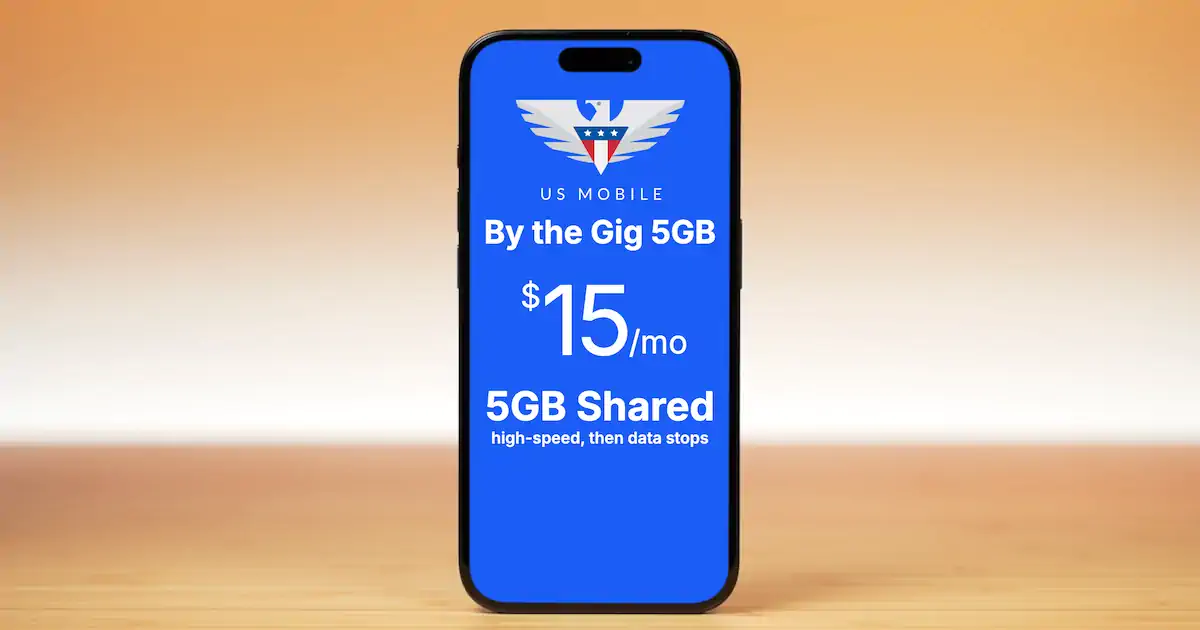How Can Some Cell Phone Plans Cost So Much Less Than Others?


Ever wonder how some cell phone plans can be so much cheaper than others?
For example, how Visible Base ($25) can cost so much less than Verizon Unlimited Welcome ($65)?
Here are the three things you need to know.
The three big mobile network operators (MNOs) are:
These big carriers spend billions of dollars per year building their cellular networks.

They purchase spectrum licenses, build or lease cell towers, and develop their network core.
To cover costs and run profitable businesses, the big carriers charge premium rates for their cell phone plans.
We’re talking between $60 to $100 per month for a single line.

But not everyone can afford these high prices.
And not everyone has a credit score required to sign up for these plans.
So what do the big carriers do?
To make extra money, the mobile network operators (MNOs) lease access to their networks to smaller carriers.
These smaller carriers are known as mobile virtual network operators (MVNOs) because instead of building their own networks, they operate virtually on existing cellular networks.
The MVNOs make agreements with the MNOs to purchase minutes, texts, and data allotments at wholesale rates.
You can think of this like Costco making deals with manufacturers to buy items in bulk at wholesale rates.

The MVNOs then bundle up the minutes, texts, and data allotments into affordable cell phone plans that appeal to different demographics of consumers.

MVNOs use other cost-cutting strategies, too, such as:

These cost-saving measures help the MVNOs offer even lower rates and pass on additional savings to consumers.
Remember, MVNOs are typically targeting their cell phone plans towards budget-conscious consumers, so offering lower prices is a big way MVNOs attract new customers.
And that’s how you end up with plans such as US Mobile's 5GB plan for $15 per month.

This plan is $180 upfront for a year (the equivalent of $15 per month) and gets you unlimited minutes, unlimited texts, and 10GB of high-speed data on either the Verizon or T-Mobile networks.
That is an excellent value for consumers, and it is made possible by US Mobile’s underlying agreements with T-Mobile and Verizon.
But, this still doesn’t explain how Visible can offer truly unlimited data for under half the price of Verizon.
How does that work?
In addition to reselling access to their cellular networks to smaller carriers, the big carriers own their own prepaid brands.
What’s going on here?
Why would the big carriers offer expensive plans and then immediately undercut themselves with low-cost plans available under a different brand name?
Here’s the strategy:
These carrier-owned brands are known as flanker carriers.
And a flanker carrier is the same concept as a flanker brand.
A flanker brand is a new brand introduced by a company to target a different market segment.
Flanker brands have:

A great example of a big brand that owns flanker brands is Proctor & Gamble.
Proctor & Gable own a variety of hair care brands that all target different market segments:
All of these brands sell the same thing: shampoo and conditioner.
But how they market their products and who they target the products for are all different.
And this strategy of introducing new brands to target different market segments is exactly what the big carriers are doing with flanker carriers.
The flanker carriers have different brand identities, different price points, and they target different market segments.

That’s how Visible can offer unlimited data for $25 while Verizon still charges $65.
It is because Visible is not competing against Verizon.
Instead, Visible is competing against the Metro by T-Mobile and Cricket Wireless that also sell unlimited data for $25 per month. These flanker carriers are targeting a price-conscious demographic of consumers that would otherwise not sign up for the expensive plans from the big carriers directly.

And the more customers Verizon, AT&T, or T-Mobile get on their networks, regardless of the price points, the more money they will make.
So that is how some plans can cost so much less than others, and how you can get a cell phone plan with the same coverage as a big carrier at a much lower price.